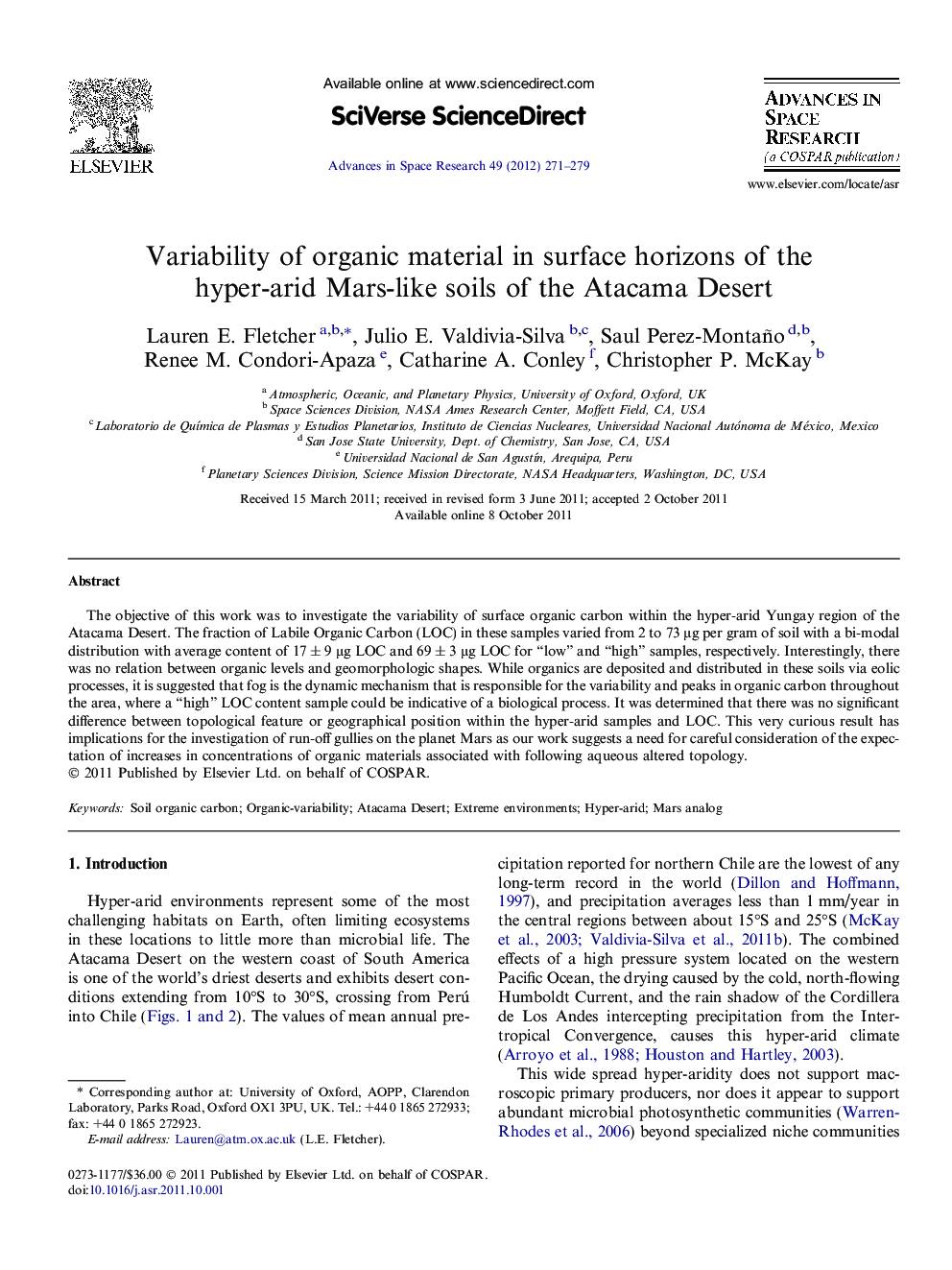| Article ID | Journal | Published Year | Pages | File Type |
|---|---|---|---|---|
| 1764646 | Advances in Space Research | 2012 | 9 Pages |
The objective of this work was to investigate the variability of surface organic carbon within the hyper-arid Yungay region of the Atacama Desert. The fraction of Labile Organic Carbon (LOC) in these samples varied from 2 to 73 μg per gram of soil with a bi-modal distribution with average content of 17 ± 9 μg LOC and 69 ± 3 μg LOC for “low” and “high” samples, respectively. Interestingly, there was no relation between organic levels and geomorphologic shapes. While organics are deposited and distributed in these soils via eolic processes, it is suggested that fog is the dynamic mechanism that is responsible for the variability and peaks in organic carbon throughout the area, where a “high” LOC content sample could be indicative of a biological process. It was determined that there was no significant difference between topological feature or geographical position within the hyper-arid samples and LOC. This very curious result has implications for the investigation of run-off gullies on the planet Mars as our work suggests a need for careful consideration of the expectation of increases in concentrations of organic materials associated with following aqueous altered topology.
